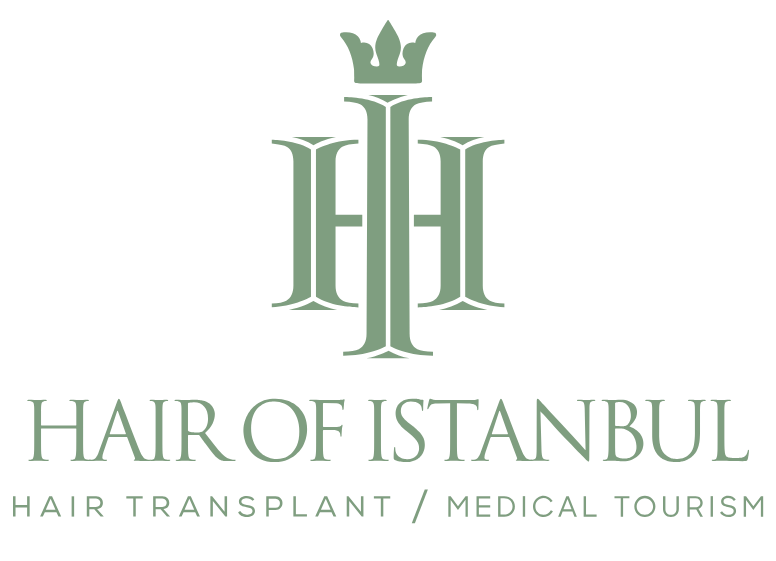Scalp Necrosis After Hair Transplant: Risk Factors Explored
Experiencing complications after a hair transplant can be concerning, and one such issue is scalp necrosis. This condition occurs when tissue on the scalp dies due to inadequate blood flow. It’s a rare but serious complication that can affect the outcome of the transplant. Recognizing the early signs and understanding the causes can help in managing and preventing this problem.
Proper surgical techniques and post-operative care are essential in reducing the risk. Patients should be aware of symptoms like severe pain, discoloration, and unusual swelling. Immediate medical attention is crucial if these signs appear. Preventative measures include choosing an experienced surgeon and following all post-surgery instructions carefully. Keep reading to learn more about how to identify and manage scalp necrosis
What Is Necrosis?
Necrosis is the death of cells or tissues in the body due to a lack of blood supply or severe injury. It can occur in any part of the body and is typically caused by factors such as infection, toxins, trauma, or diseases. When cells die, they can no longer function properly, leading to the breakdown and decay of the affected tissue. This process can cause inflammation and damage to the surrounding healthy tissues, leading to further complications if not treated promptly.
In the context of hair transplants, necrosis can occur when the transplanted hair follicles or surrounding scalp tissue do not receive adequate blood supply during or after the procedure. This can result in the death of the affected tissue, potentially leading to scarring and loss of the transplanted hair.
Also Read: Does Hairspray Cause Hair Loss? Insights Into Damage
Why Does Necrosis of the Scalp Occur?
Necrosis after a hair transplant is an unwanted outcome. It usually happens due to issues during the procedure. Factors like poor blood supply and infections are common causes. For more details, refer to the table below:
| Poor Surgical Technique | Inaccurate implantation techniques can damage blood vessels, leading to poor blood flow. |
| Deep Incisions | Excessively deep cuts during the transplant can harm underlying tissues and vessels. |
| Dense Packing of Grafts | Overcrowding grafts in a small area can restrict blood flow, causing tissue death. |
| Excessive Number of Channels | Creating too many channels for grafts can disrupt the scalp’s vascular network. |
| Pre-existing Conditions | Patients with conditions affecting blood circulation, like smoking or certain medications, are at higher risk. |
| Infections | Bacterial infections during or after the procedure can lead to inflammation, tissue damage, and disrupted blood flow. |
| Excessive Tension on the Scalp | Tight bandages or physical strain can restrict blood flow to the transplanted area. |
| Improper Post-operative Care | Neglecting proper care post-surgery can increase the risk of complications leading to necrosis. |
What Are the Symptoms of Necrosis?
Scalp necrosis after a hair transplant can present with various symptoms. Recognizing these early can help in seeking timely treatment. The table below outlines the common symptoms:
| Severe Pain | Persistent and intense pain in the affected area |
| Dark Discoloration | The skin may turn black, purple, or dark brown, indicating dead tissue. |
| Foul Odor | A noticeable bad smell coming from the necrotic area. |
| Swelling and Redness | Inflammation around the affected region. |
| Tenderness and Sensitivity | The area may be very tender to touch. |
| Headaches | Patients often report temporal headaches. |
| Fever | A rise in body temperature, indicating possible infection. |
| Vision Problems | In severe cases, necrosis may cause visual disturbances. |
Also Read: 20 Celebrities With Alopecia: Guess Who’s on The List?
How Common Is Necrosis After Hair Transplant?
Necrosis is a rare but potential complication of hair transplants. While the risk exists, it is significantly low. Advanced techniques like Follicular Unit Extraction (FUE) have further reduced the incidence. Nevertheless, careful surgical practice is crucial to minimize the risk. Proper post-operative care also plays a vital role. Patients should follow all medical advice closely. Awareness and prompt action can prevent severe outcomes. [1]
What Does Skin with Necrosis Look Like?
Necrosis of the scalp following a hair transplant is not a pleasant sight. The affected skin typically appears black or dark. It often resembles a severe burn. These dark patches indicate dead tissue. Sometimes, there may be an unpleasant odor. The skin in these areas is also usually very tender. This condition requires immediate medical attention. Here are some visual examples of necrosis:

Image: onlinelibrary.wiley.com
Differences Between Crustling And Necrosis
Here is a detailed table showing the differences between crusting and necrosis after hair transplant operations:
| Criteria | Crusting | Necrosis |
| Definition | Formation of scabs on the scalp after the transplant | Death of scalp tissue following the procedure |
| Appearance | Small, dry, yellowish or brown scabs | Dark, black, or purplish areas of skin |
| Onset | Typically 2-3 days post-operation | Usually observed 1-2 weeks after the procedure |
| Cause | Natural healing process, exposure of graft sites to air | Poor blood supply, excessive trauma, infection |
| Duration | Usually lasts 7-14 days | Can persist for several weeks and requires medical intervention |
| Symptoms | Mild itching, slight discomfort | Severe pain, significant discomfort, swelling, foul odor |
| Management | Gentle washing, moisturizing, avoiding picking at scabs | Medical treatment, debridement, antibiotics |
| Healing Process | Scabs fall off naturally, revealing new hair growth | Prolonged healing, potential for scarring |
| Risk Factors | Improper post-op care, excessive sun exposure | Aggressive extraction, poor surgical technique, smoking |
| Impact on Hair Growth | Minimal, as long as scabs are not forcibly removed | Potential loss of grafts, patchy hair growth, scarring |
Also Read: Turkish Hairlines: From No Hairline to Istanbul’s Fine Line
How to Avoid Necrosis After Hair Transplant?
There are various measures to prevent necrosis before undergoing a hair transplant. Choosing an experienced doctor and ensuring the clinic meets hygiene standards are crucial. Proper personal care and following medical advice post-surgery also play a significant role. Here are some preventive steps:
| Choose an Expert Doctor | Select a surgeon with extensive experience in hair transplantation. |
| Check Clinic Hygiene | Ensure the clinic follows strict hygiene protocols to avoid infections. |
| Avoid Alcohol | Refrain from consuming alcohol before and after the procedure to ensure better healing. |
| Quit Smoking | Stop smoking well in advance to improve blood circulation and reduce complications. |
| Maintain Personal Hygiene | Keep the scalp clean and follow proper hygiene practices post-surgery. |
| Follow Doctor’s Advice | Adhere to all post-operative care instructions provided by the surgeon. |
| Use Prescribed Medications | Take all medications as directed to aid in healing and prevent infections. |
Also Read: What to Eat After Hair Transplant for Optimal Growth
How Is Necrosis Treated?
If necrosis occurs after a hair transplant, it is crucial to seek medical attention promptly. The condition needs proper treatment to prevent further complications. Below are some common treatment methods: [2]
| Surgical Debridement | Removal of necrotic tissue to prevent infection spread, sometimes involving amputation in severe cases. |
| Medication Therapy | Use of antibiotics or antifungal drugs to fight infections associated with necrosis. |
| Hyperbaric Oxygen Therapy | A pressurized oxygen chamber increases oxygen levels in red blood cells, promoting wound healing, although its effectiveness is not always certain. |
| Tetanus Vaccination | A tetanus shot may be recommended by a healthcare provider to protect against additional infections. |
FAQ
What Are the Dark Spots After Hair Transplant?
Dark spots on the scalp after a hair transplant might indicate necrosis. However, they are not always a cause for concern. It’s essential to monitor these spots and consult a doctor if they persist or worsen.
What Is the Black Crust After Hair Transplant?
A black crust on the scalp post-transplant could be a sign of necrosis. It’s vital to seek medical attention immediately if such symptoms appear. Prompt action can prevent severe complications and promote better healing.
Also Read: Why Do People Go to Turkey for Hair Transplants?
CONCLUSION
Preventing and managing scalp necrosis after hair transplant is essential for a successful outcome. At Hair of Istanbul, we prioritize patient care to minimize risks. Our advanced techniques and strict hygiene protocols ensure the best possible results. Following post-operative care instructions is crucial for recovery.
We provide detailed guidance to help patients avoid complications. Our experienced team is dedicated to supporting you throughout the healing process. If you experience any unusual symptoms, prompt medical attention is available.
We believe in delivering personalized care to meet each patient’s unique needs. By choosing Hair of Istanbul, you can trust in our commitment to your health and satisfaction. Let us help you achieve the best results with our expertise and dedicated care.
References:
- [1] Jian Chen, Feb 2024 – Recipient site scalp necrosis: A rare postoperative complication of hair transplantation – https://pubmed.ncbi.nlm.nih.gov/37814471/
- [2] Jennifer Whitlock, Feb 17, 2009 – Necrosis Causes and Symptoms in the Human Body – https://www.verywellhealth.com/what-is-necrotic-tissue-3157120








